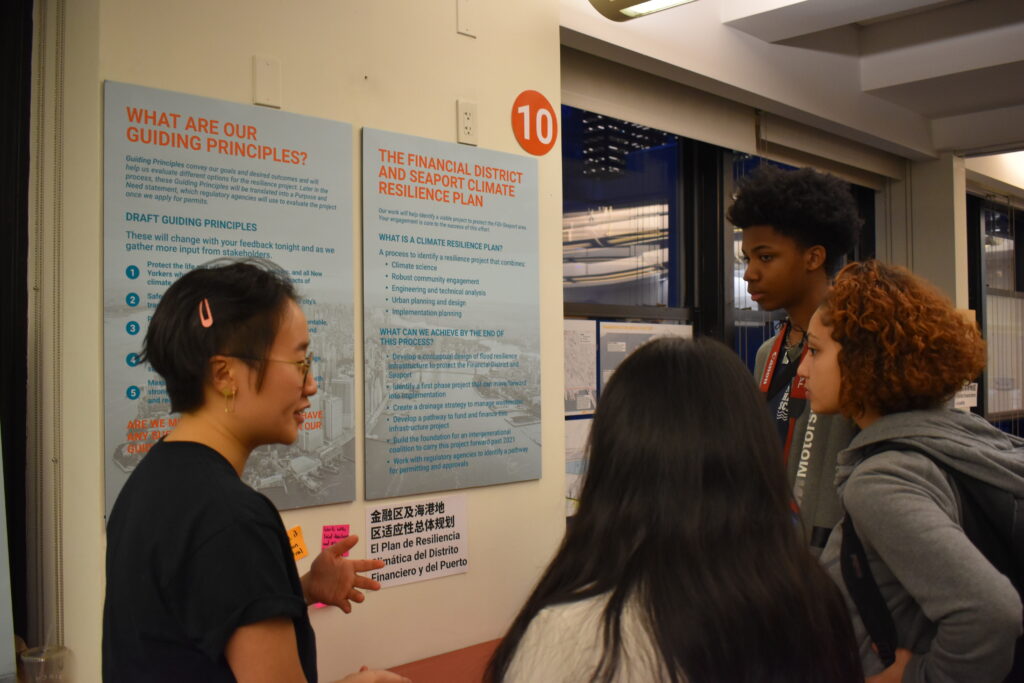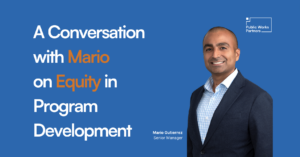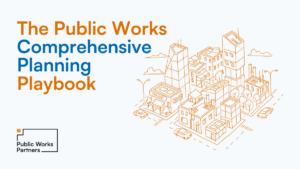
Public Works Partners takes community engagement seriously. We’ve crafted dozens of strategies to engage populations who have been historically underrepresented in the public planning process, built community buy-in, and implemented strategies that incorporate diverse perspectives from across communities. In all our projects, we customize our engagement strategy to celebrate the culture of the community in question. We’re always on the hunt for new approaches to hear from New Yorkers on their needs and visions for the projects we work on.
This work is underscored by our foundational belief that community members must be meaningfully included in the planning process. But it is a two-way street. Planners and community engagement specialists bear the responsibility of creating accessible engagement opportunities, while community members need to make use of these opportunities to advocate for their needs. It is so important for community members to get involved early and often to ensure that their priorities are explored and acted upon from the earliest stages of idea development to execution. We have seen first-hand how bold ideas posed during workshops, patterns appearing in surveys, or opinions formed in focus groups go on to impact the outcomes of a project. These views may alter the trajectory of a public awareness campaign, inform a city agency’s priorities, or increase a nonprofit’s capacity to reach community members.
Here are just a few of the reasons you should get involved in the public planning process:
1. Make Your Voice Heard!
As someone who knows the ins and outs of your own community, your unique voice, opinions, and distinct perspective matters a lot. Participation from a broad range of constituents, like you, enables planners to gain a better sense of the nuanced needs of everyone who will be impacted by a project.
2. Build Trust, Get Trust
Relationships of any kind are a two-way street. Building a sense of mutual respect and clear communication between citizens and the government leaders, city agencies, advocacy organizations, private actors, and other stakeholders who guide planning projects instills a sense of trust and accountability that will compound over time.
3. Advocate for your Needs
What’s bothering you? Do you have ideas to solve them but no concrete action plan? By participating in a workshop or attending an event, you can convey your needs to others and explore how those needs can be addressed or prioritized.
4. Keep that Conversation Going
Planning workshops, community board meetings, and other gatherings are great opportunities to become aware of support resources available to you, meet others who care about the same issues you do, and get a better sense of the local representatives who can advocate on your behalf. By tapping into these resources and conversations, you can increase your impact on the projects you care about.
5. Make Friends and BFFs
Take the time to get to know your neighbors. The time and effort spent working toward the same goal or outcome brings people together. The sense of connection and relationships you form during the planning process may transcend the limits of an individual project or issue.
There are many ways to get involved in a public planning process. You can even take part at home, virtually. In the last year, the ability for residents to engage virtually has increased dramatically. Many organizations and city agencies have really pushed technology and innovation to open the door to new engagement opportunities, allowing people to get involved on their own time and terms.
One such platform is MetroQuest, which we are currently using to support the NYC Streets Plan, a five-year plan to set equitable and ambitious goals for New York City’s streets. Public Works and the project team recently launched the NYC Streets Plan’s online engagement platform! More than a traditional survey, the online platform incorporates a series of interactive activities that allow New Yorkers to map out specific transportation challenges they have noticed on their streets. Your experiences, perspectives, and concerns are essential to creating an effective Streets Plan that reflects the needs of the city. Head over to theplatform to tell us about your visions for New York City’s streets!
Texting and phone calling is another great option that has come to the forefront over the past year. Mass texting is a powerful tool for getting the word out about events in a way that reaches more people across different age groups and income levels as phone-first communication methods are better suited to reaching people who have limited access to broadband and/or limited computer literacy. The NYC Streets Plan will be utilizing both approaches to reach traditionally underrepresented communities to ensure that the Plan is representative of all New Yorkers. By analyzing the input New Yorkers provide in MetroQuest, the project team will have the ability to identify areas where little to no input is being provided. Those areas will be targeted through text communications and phone interviews. Phone interviews will also be provided in languages other than English.
The NYC Streets Plan is just one example of the many ways your voice can shape the built environment, services, and amenities of your city. In most cases, mandatory public engagement processes ensure that community members participate to a degree, but today many planners, developers, and agencies are looking to engage communities at a much larger and more meaningful scale to ensure that their projects actively meet the needs of the community. Now is the time to get involved and advocate for your future.





 Public Works Partners is a WBE/DBE-certified urban planning and consulting firm. Our expertise lies in creating innovative, equitable, and sustainable solutions to complex problems.
Public Works Partners is a WBE/DBE-certified urban planning and consulting firm. Our expertise lies in creating innovative, equitable, and sustainable solutions to complex problems.